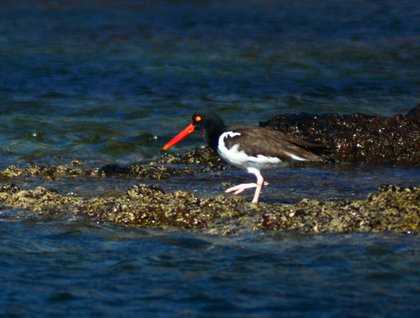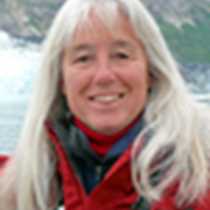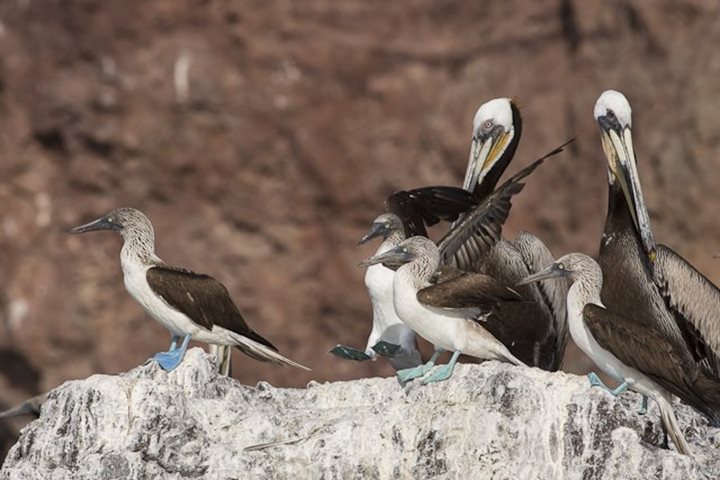“Find the big rock and then tip your binoculars to 10:00,” says “She Lee” Moll, our naturalist, peering through her glasses at the green slope of Isla del Carmen. She has located three desert bighorn sheep, slowly picking their way across the scree. Joining Lee on the front deck with their own binoculars, guests spot the sheep: “Oh, I see them!” pipes up a small voyager. “He Lee” Fleischer, our expedition leader, helps others locate the curling horns of a large male. Some seventy years ago, the elusive beasts intrigued other travelers to the Gulf, John Steinbeck and Ed Ricketts, who, in 1940, accepted a Mexican rancher’s invitation to hunt for the bighorn sheep, borrego, out of Puerto Escondido. But on their overnight trek, they never saw one at all, no surprise, since there were—and are—few of these animals on the mainland. On privately owned Isla del Carmen, however, a herd of several hundred grazes the arroyos.
On Tuesday, December 23, the wind whips Gulf of California waters, not uncommon at this time of year. Guests spend the morning in Zodiacs, poking in and out of the rocky coast, spotting vultures, brown pelicans, oystercatchers and cormorants, those smoky black birds whose heavy bones make it easy for them to dive for fish, naturalist William Lopez-Forment explains. Our boat watches an osprey on top of a cardon munching a recently-caught fish. Beneath the boat, in the clear waters, we spot urchins, each in its pocket of rock.
At noon, naturalist Justin Hofman and undersea specialist Ian Strachan invite the boat’s youngest sailors to join them on Zodiacs to collect plankton. Back on board the ship, the water sample goes into a petri dish that is tucked under the microscope and then projected onto monitors in the guest lounge. National Geographic scientist Dr. William Gilly identifies the creatures in this wondrous soup: “If you took in some water when you were snorkeling yesterday, this is what you drank,” he chuckles. Chaetognaths, spherical tubes, float in and out of focus. One has a copepod clenched in its fierce bristle jaws. A clam larva sticks out and wiggles its tiny foot. Miniature crab larvae scoot into focus. Sputnik-like radiolarians swirl into view.
Midafternoon, the winds calm and snorkeling begins. One young guest reports seeing “a school of fish that was gray with blue and yellow strips.” She likes snorkeling because “you can see the fish up really close.”
At 5:30, Ian and Justin dive with video cameras and project live what they see to the lounge monitors. They speak to us in the lounge as they weave among puffer fish and sea stars and damselfish. “Do you have to go to college to be a scuba diver?” asked one young visitor from the lounge. “No,” undersea Ian assures him via microphone. “I got my certification at fourteen.” That answer satisfies every young guest, I’m sure.
The day closes with naturalist David Stephens surveying geology of the Gulf. He reminds guests of the importance of plate tectonics: Baja California is a “part of North America that has been torn away and rides northwest on the Pacific plate.”
Tonight the ship rides westward to Puerto Escondido and Christmas Eve in the missions.








